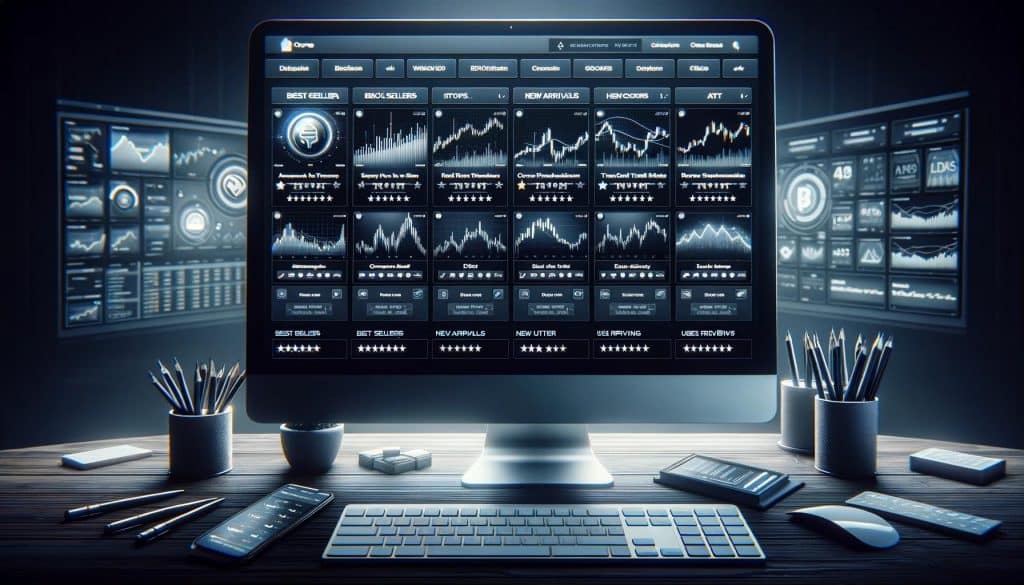In the fast-paced world of Forex trading, where markets operate 24/7 and opportunities for profit can arise at any moment, efficiency and precision are key. The advent of Forex trading automation tools has significantly changed the landscape, offering traders innovative ways to navigate this dynamic environment. These tools, powered by sophisticated algorithms and capable of executing trades with unparalleled speed and accuracy, have opened new avenues for traders looking to maximize their profitability while minimizing risk. This article explores the evolution, types, and benefits of Forex trading automation tools, delving into their profitability and how traders can integrate them into their strategies for enhanced trading performance.

Exploring Forex Trading Automation Tools
The Evolution of Forex Trading Automation
Forex trading has undergone a remarkable transformation over the past few decades. Initially, trading required a physical presence in exchange rooms, with decisions made on the spot. The digital age brought about the first wave of automation, allowing trades to be executed electronically. However, the true revolution began with the development of Expert Advisors (EAs) and trading bots, which introduced the ability to automate trading strategies based on predefined criteria. This evolution has culminated in sophisticated algorithmic trading platforms capable of analyzing vast amounts of data to make trading decisions in milliseconds, a feat unachievable by human traders.
Types of Forex Trading Automation Tools
Forex trading automation tools vary widely in their complexity and purpose, catering to different trading styles and objectives:
- Expert Advisors (EAs): These are programs that automate trading operations on platforms like MetaTrader 4 (MT4). EAs can be tailored to execute trades based on technical indicators, price patterns, or a combination of various strategies.
- Trading Bots: Often used in algorithmic trading, these bots can analyze market conditions and execute trades across multiple currencies and timeframes, utilizing advanced mathematical models to predict price movements.
- Algorithmic Trading Platforms: These platforms offer a more comprehensive solution, allowing traders to develop, test, and execute complex trading algorithms. They often include features for backtesting strategies against historical data to assess their viability before live implementation.

The Benefits of Using Forex Trading Automation Tools
Automation tools in Forex trading offer numerous advantages, enhancing not only the efficiency of trading operations but also the overall profitability of traders.
Enhanced Trading Efficiency
By automating the trade execution process, traders can ensure that their strategies are executed at the optimal moment, without the delays inherent in manual trading. This means that trades are placed precisely according to the strategy’s parameters, maximizing the chances of capturing the desired price movements.
Reduced Emotional Trading
One of the key benefits of using automation tools is the elimination of emotional biases from trading decisions. Automation ensures that trades are executed based on objective criteria, rather than the fear or greed that can often lead to costly mistakes.
Ability to Backtest Strategies
Perhaps one of the most valuable features of automation tools is the ability to backtest trading strategies against historical data. This allows traders to refine their strategies and adjust parameters to improve performance, based on empirical evidence rather than speculation.

Is Automated Forex Trading Profitable?
Analyzing the Profitability of Automated Trading
Automated Forex trading introduces a paradigm where strategic execution, precision, and speed converge to create potentially profitable opportunities. The profitability hinges on several factors including the choice of automation tool, the underlying trading strategy, and the trader’s ability to adapt to changing market conditions. For instance, an EA programmed to capitalize on short-term volatility during major economic announcements can yield significant profits if it accurately predicts market movements.
Success Stories and Case Studies
While generalized success stories abound, one anonymized case study involves a trader who implemented a trend-following EA on the EUR/USD pair. By fine-tuning the EA’s parameters to align with long-term moving averages and incorporating a strict risk management protocol, the trader was able to achieve a consistent 5% monthly return on their investment over a year, highlighting the potential for EAs to generate sustainable profits.

Implementing Automation Tools in Your Forex Trading Strategy
Choosing the Right Automation Tool
Selecting the right Forex trading automation tool is pivotal. It requires understanding your trading style, objectives, and the specific market conditions you intend to trade. For traders focused on day trading, an EA that can quickly react to market movements and execute high-frequency trades may be ideal. Meanwhile, traders with a long-term perspective might prefer an EA that analyzes broader market trends and economic indicators.
Optimizing Automation Tools for Maximum Performance
Optimization is critical for ensuring that an automation tool performs at its best. This involves not only adjusting the EA’s parameters to suit your trading strategy but also regularly updating the tool to reflect the latest market conditions and trading technologies. A balance between automation and human oversight, where the trader periodically reviews EA performance and intervenes when necessary, can enhance the tool’s effectiveness.

Conclusion: The Future of Forex Trading with Automation Tools
The integration of automation tools in Forex trading represents a forward-looking approach to market engagement. As technology evolves, so too will the sophistication of these tools, offering even greater opportunities for efficiency and profitability. The future of Forex trading with automation tools looks promising, with advancements in AI and machine learning expected to further revolutionize how trades are executed and strategies are developed.

FAQs: Forex Trading Automation Tools
How do I start with Forex trading automation tools?
To start with Forex trading automation tools, first, identify your trading strategy and goals. Then, choose a compatible trading platform like MetaTrader 4 (MT4) that supports automated trading. Next, select an Expert Advisor (EA) that aligns with your strategy. You can find EAs through brokers, online marketplaces, or by developing one if you have programming knowledge. Finally, test the EA using a demo account to ensure it performs as expected before applying it to live trades.
Can I use Forex trading automation tools on any trading platform?
Not all trading platforms support Forex trading automation tools like Expert Advisors (EAs). MetaTrader 4 (MT4) and MetaTrader 5 (MT5) are among the most popular platforms that offer extensive support for automated trading. When choosing a platform, ensure it is compatible with the type of automation tools you intend to use.
Are Forex trading automation tools suitable for beginners?
Yes, Forex trading automation tools can be suitable for beginners, as they can execute trades based on predefined strategies without the need for constant market monitoring. However, it’s crucial for beginners to understand the basics of Forex trading and the principles behind the strategies their EAs implement. Starting with a demo account to test automated tools is also recommended.
How do I optimize my EA for better performance?
Optimizing an EA for better performance involves fine-tuning its settings based on backtesting results and your trading preferences. This can include adjusting risk management parameters, entry and exit criteria, and the indicators used for making trading decisions. Regularly review your EA’s performance and make adjustments as market conditions change.
Is automated Forex trading profitable?
Automated Forex trading can be profitable, but it depends on various factors, including the quality of the EA, the effectiveness of the underlying trading strategy, and the trader’s ability to manage risk. While EAs can execute trades with high precision, traders should maintain realistic expectations and understand that not all automated trades will be profitable.
Can I run multiple EAs simultaneously?
Yes, you can run multiple EAs simultaneously on platforms like MetaTrader 4 (MT4). However, ensure that your trading platform and account can handle the increased workload, and be aware of any potential conflicts between EAs, especially if they trade similar instruments or employ contrasting strategies.
How often should I monitor my automated trading system?
While automated trading systems are designed to operate with minimal supervision, regular monitoring is essential to ensure they are functioning correctly and adapting to any market changes. The frequency of monitoring depends on your trading strategy and the volatility of the markets you’re trading. At a minimum, weekly checks are advisable, with more frequent monitoring during periods of high market volatility or when major economic events occur.





